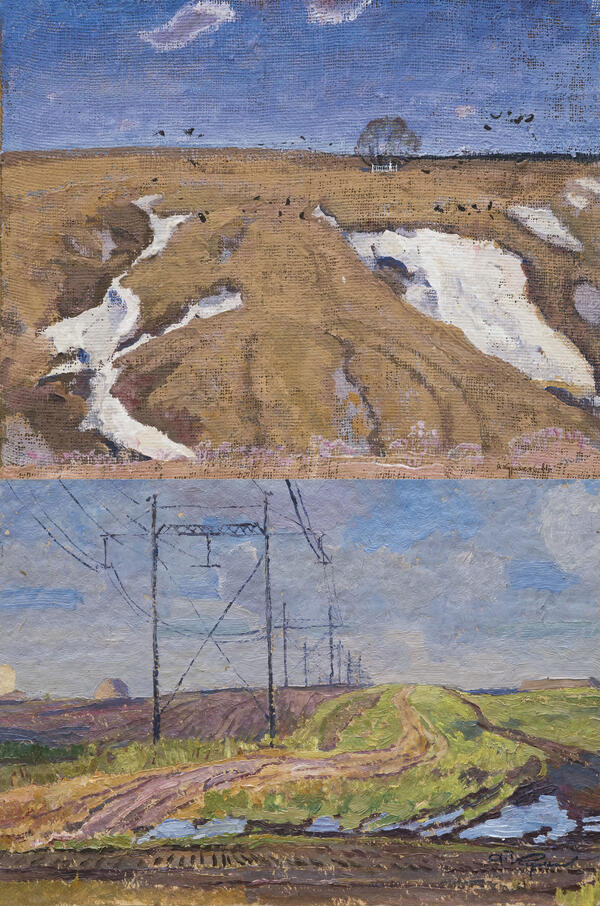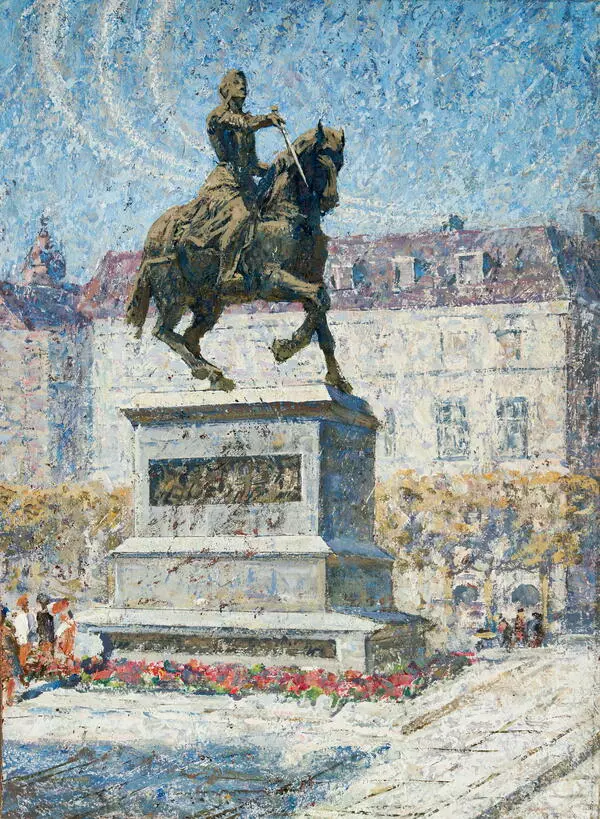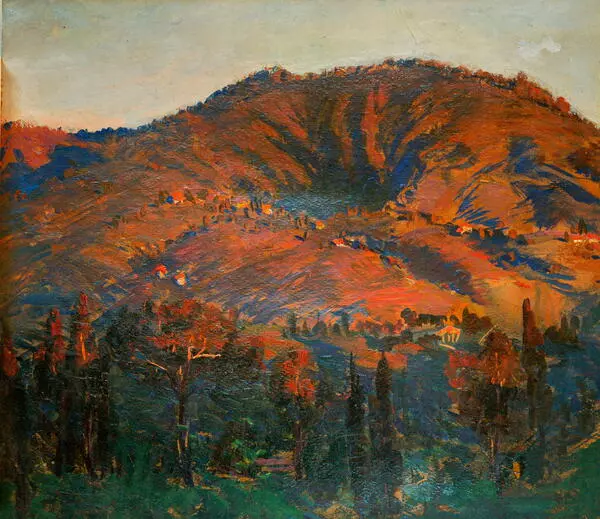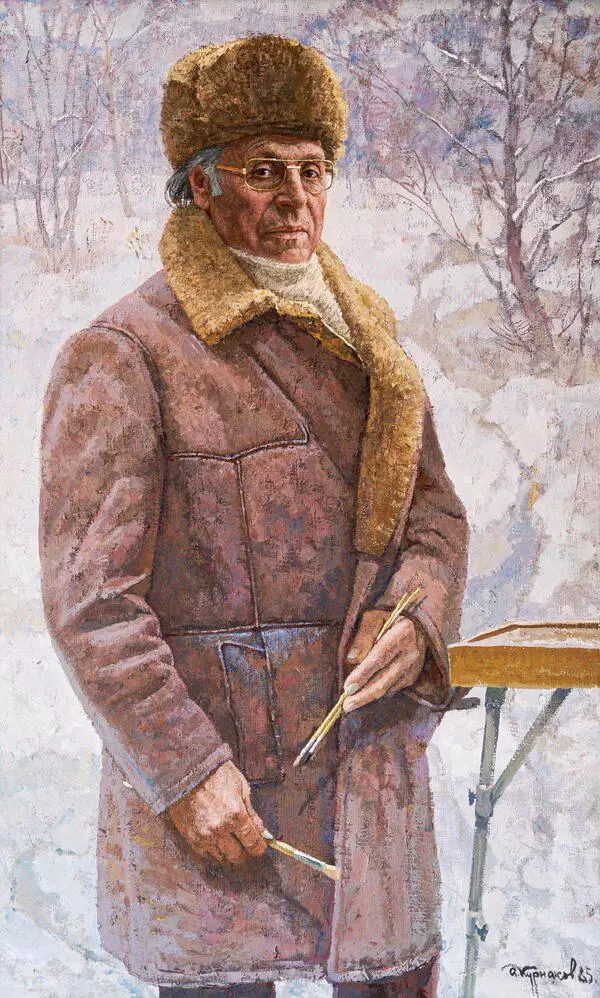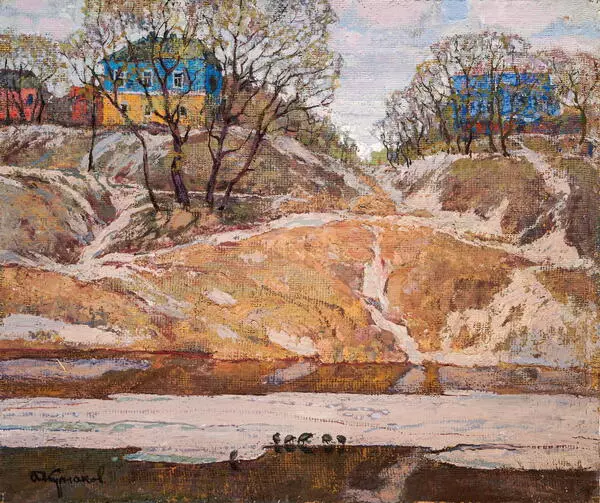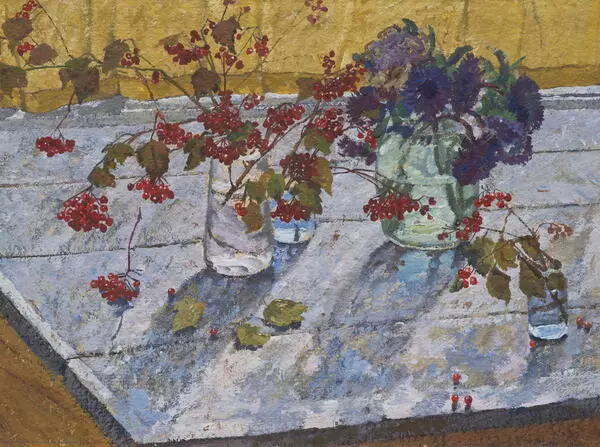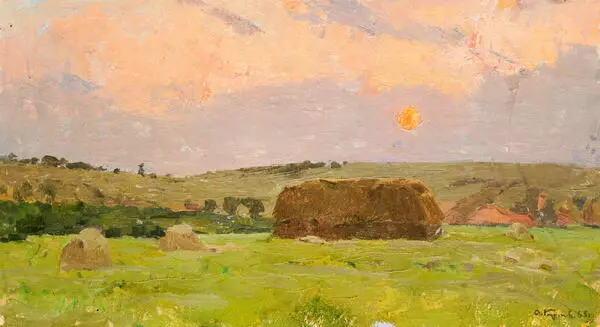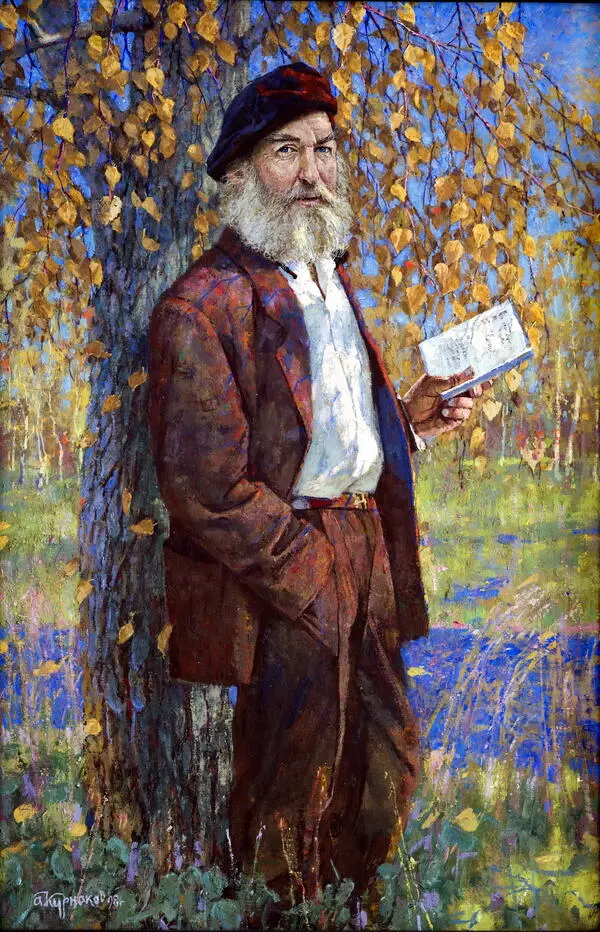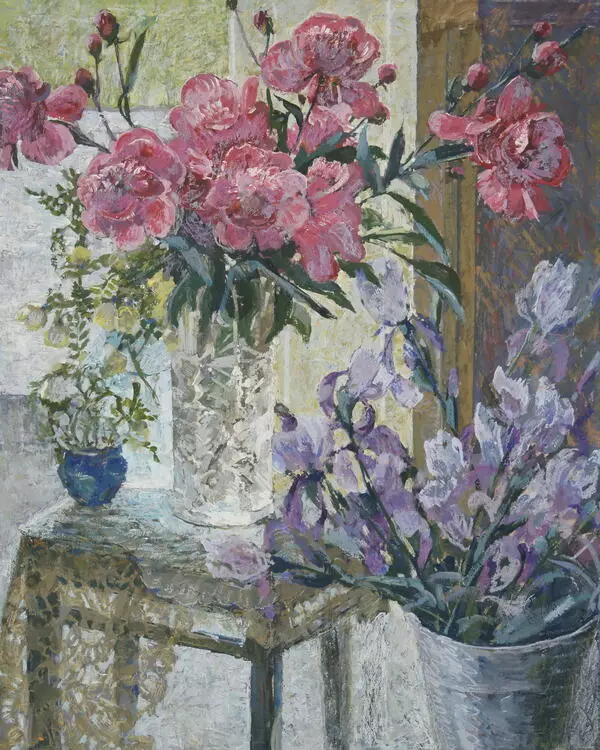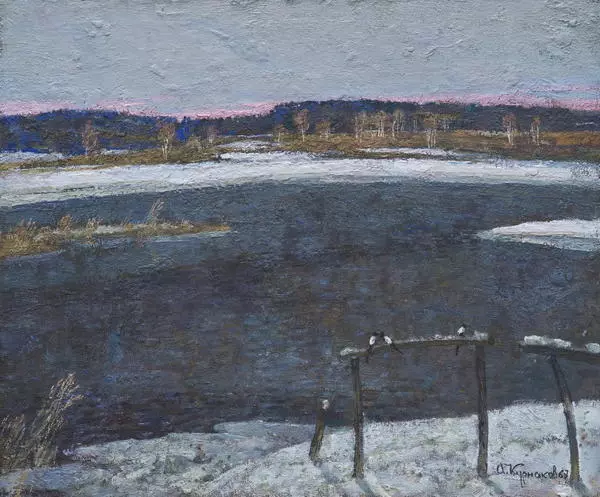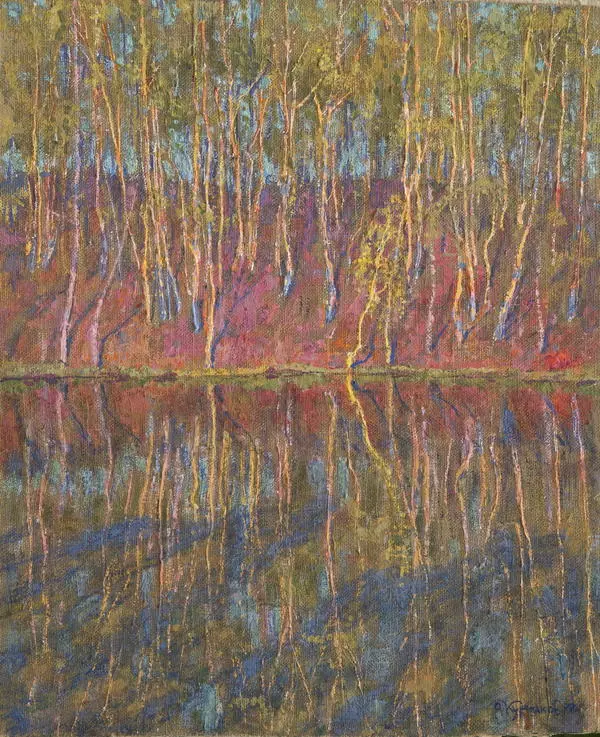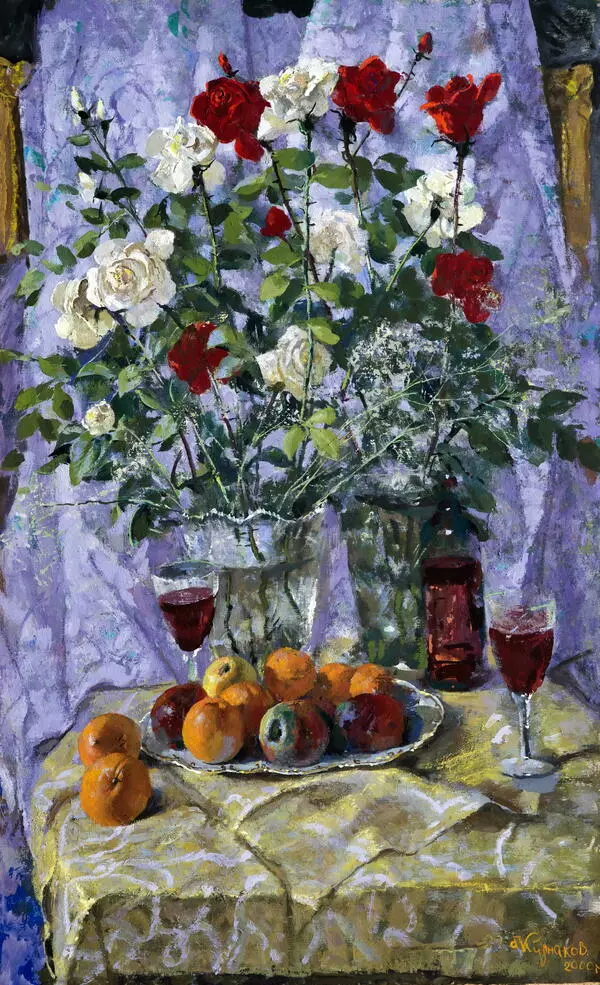Landscape depicting early spring, with a high sky line. In the foreground is a gentle, brown-ocher, rather high slope of a ravine that has got rid of snow under the rays of the spring sun, somewhere cut by deep steeps, in the lowlands of which lies the darkened snow left over from winter. Along the entire canvas, above the ravine and further above the field, flocks of birds with black plumage are depicted flying at different heights, some of them sit on the ground.
In the background on the right, there is a spreading lonely growing tree resembling a ball, with large branches, with foliage beginning to bloom, giving the impression of a greenish haze. In front of the tree not very tall, cone-shaped monument tapering upward is depicted, surrounded by a rare white fence. On the right, on the horizon, a black line is conditionally drawn, denoting a forest.
The entire upper part of the canvas is occupied by the image of the sky, from blue to sapphire in the upper right corner. Two large clouds are floating in the sky as well as translucent rare gray clouds, looking like haze.
Artists from different eras painted the sky. The portrayal of the changeable sky landscape has always required special skill. On the canvases of Dutch artists, the sky occupied almost two-thirds of the canvas and was painted out so that the season and time of day could be determined. Among the representatives of romanticism, the landscape was often mystical, and the sky served as a reflection of the hero’s spiritual quest. Ivan Aivazovsky depicted the ether as carefully as the waves of the sea.
The color of this spring landscape is warm, ocher-azure. The picture is distinguished by an unpretentious, simple plot that conveys the author’s genuine, quivering love for his native land.
Andrei Ilyich Kurnakov participated in the Great Patriotic War. In his works, you can often see lonely monuments on the vast expanses of fields, the monuments to the soldiers who, at the cost of their lives, saved the Russian land for future generations. Throughout his career, the artist has addressed this topic several times, making a connection between death and the awakening life.
A clear division of the composition into grounds, most of which is occupied by a powerful image of the earth awakening in spring, emphasizes the life-affirming beginning, masterfully conveyed by A.I. Kurnakov with the help of his recognizable brushwork.
In the background on the right, there is a spreading lonely growing tree resembling a ball, with large branches, with foliage beginning to bloom, giving the impression of a greenish haze. In front of the tree not very tall, cone-shaped monument tapering upward is depicted, surrounded by a rare white fence. On the right, on the horizon, a black line is conditionally drawn, denoting a forest.
The entire upper part of the canvas is occupied by the image of the sky, from blue to sapphire in the upper right corner. Two large clouds are floating in the sky as well as translucent rare gray clouds, looking like haze.
Artists from different eras painted the sky. The portrayal of the changeable sky landscape has always required special skill. On the canvases of Dutch artists, the sky occupied almost two-thirds of the canvas and was painted out so that the season and time of day could be determined. Among the representatives of romanticism, the landscape was often mystical, and the sky served as a reflection of the hero’s spiritual quest. Ivan Aivazovsky depicted the ether as carefully as the waves of the sea.
The color of this spring landscape is warm, ocher-azure. The picture is distinguished by an unpretentious, simple plot that conveys the author’s genuine, quivering love for his native land.
Andrei Ilyich Kurnakov participated in the Great Patriotic War. In his works, you can often see lonely monuments on the vast expanses of fields, the monuments to the soldiers who, at the cost of their lives, saved the Russian land for future generations. Throughout his career, the artist has addressed this topic several times, making a connection between death and the awakening life.
A clear division of the composition into grounds, most of which is occupied by a powerful image of the earth awakening in spring, emphasizes the life-affirming beginning, masterfully conveyed by A.I. Kurnakov with the help of his recognizable brushwork.

